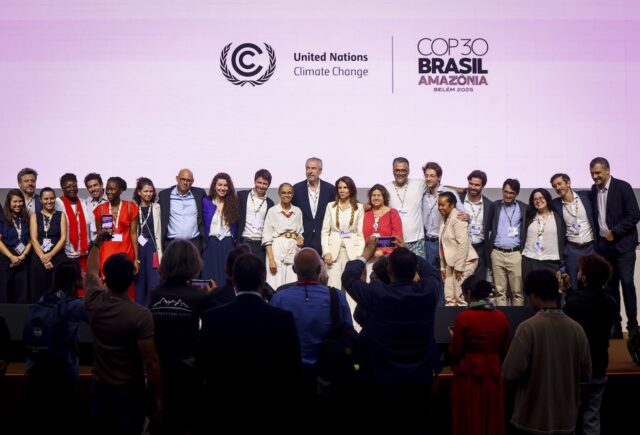The Dutch-headquartered asset manager is one of a growing number of institutions that say combatting biodiversity loss can also be an investment opportunity.

Robeco has launched an equities fund investing in companies taking measures to reduce biodiversity loss to its range of impact investing strategies. The fund’s architects hope it will provide high returns by backing the “biodiversity winners” of tomorrow.
The RobecoSAM Biodiversity Equities fund is described by the asset manager as a “high-conviction” thematic investment strategy, which will invest in companies that support sustainable use of natural resources, along with technologies, products and services that reduce biodiversity threats or restore natural habitats.
It is classified as an Article 9 fund under the EU’s Sustainable Finance Disclosure Regulation (SFDR). Article 9 funds are those in the greenest SFDR classification – funds that have sustainable investment or a reduction in carbon emissions as their objective.
David Thomas, the Robeco biodiversity fund’s senior portfolio manager, told Impact Investor that, as with Robeco’s other impact investing strategies, the biodiversity fund portfolio would be benchmarked against the MSCI World Index with the aim of outperforming it.
Strategic themes
Robeco has developed what it calls a strategic theme reference (STR), which determines a “universe” of stocks in which each of its thematic strands can invest.
“Every stock that goes into our benchmark biodiversity universe has to be sustainable, hence the Article 9 classification. Then we pick the ones we think are going to generate the highest alpha,” Thomas said.
At launch last month the portfolio included just over 40 companies picked from a pool of around 230 potential targets in the company’s STR universe by a team led by Thomas and Co-Portfolio Manager Aaron Re’em.
Robeco worked with the Netherland’s office of the World Wide Fund for Nature (WWF)– which lobbies investors to take biodiversity seriously – on the fund’s design and on how it could work with companies to improve their biodiversity credentials. The biodiversity fund will engage with up to 25% of the firms in the portfolio to that end.
“We have developed a systematic approach to capturing thematically aligned companies, and what we want to do is find future biodiversity winners. The way that we’ve done that is to focus on high-impact activities such as agriculture, forestry, fishing, and aquaculture, which represent nearly three quarters of species loss,” said Re’em.
Another theme for the fund is “traceable products”, which means Robeco will also seek investments in organic food and beverages, eco-friendly furniture and more environmentally friendly versions of consumer goods such as cosmetics.
Wide range of targets
The company declined to talk about specific stocks, but Thomas told Impact Investor that of the 230 or so stocks of wide-ranging sizes in its universe of possible targets, around 70 could be categorised as consumer staple products companies, such as large food and personal products groups. Other significant categories include materials, including sustainable forestry companies, and industrials.
Robeco is looking in particular at measures that impact ecosystems as a whole to promote biodiversity. So, in the fisheries sector, this could involve limits to the amount of fish taken from an area, or efforts to improve ocean conservation. In freshwater networks, pollution prevention measures or improved wastewater treatment would be included
Investee companies which might be suitable for engagement are likely to be those with a commitment to biodiversity but with a gap to achieving best practice. That could involve providing strategic advice on, say, moving from dairy-based products to plant-based products, according to Re’em.
“We’re not necessarily looking to invest in areas such as software or financials, which a lot of our peers do, because while they may have a low biodiversity footprint, they don’t really have much interactive engagement with improving biodiversity outcomes. Ultimately, the thematic has been designed to have the biggest positive impact we can in a listed investment environment,” Thomas said.
That also means not investing in companies that may provide biodiversity benefits, but which have a negative impact in terms of other UN sustainable development goals. That is a no small task, especially when dealing with multinational conglomerates operating in multiple sectors, but Robeco says it is committed to that strategy
“The confectionery, carbonated soft drinks or alcoholic beverage firms would not really be investable for us, because their industry does not meet our requirements for health and well-being, even if they have ambitious biodiversity targets to drive change. A forestry company may operate thermal coal power plants – again that wouldn’t be part of our investment set, if the sales from that side of the business were above a certain level,” Re’em said.
Inexact science
Biodiversity impact measurement is a discipline in the early stages of development and the myriad variables involved make this a trickier proposition than measuring, say, success in achieving carbon emissions reductions. Efforts are underway to standardise the way biodiversity impacts are measured by investment institutions, but in-house solutions play an important role for now.
Coming up with a proprietary set of key performance indicators (KPIs) that Robeco believes are a step in the right direction has meant working through sources such as the EU taxonomy, reports from the Intergovernmental Science-Policy Platform on Biodiversity and Ecosystem Services (IPBES) and others, and company records.
“There isn’t an off-the-shelf unique data set that solves all your biodiversity questions. It needs a hell of a lot of on-the-ground, roll-your-sleeves-up work to make sure you’re getting the KPIs right, that you’ve understood the company’s objectives around their KPIs, and looked at their third-party accreditation. It also involves poring through financial reports and papers and holding companies to account for what they’ve stated publicly,” says Thomas.






